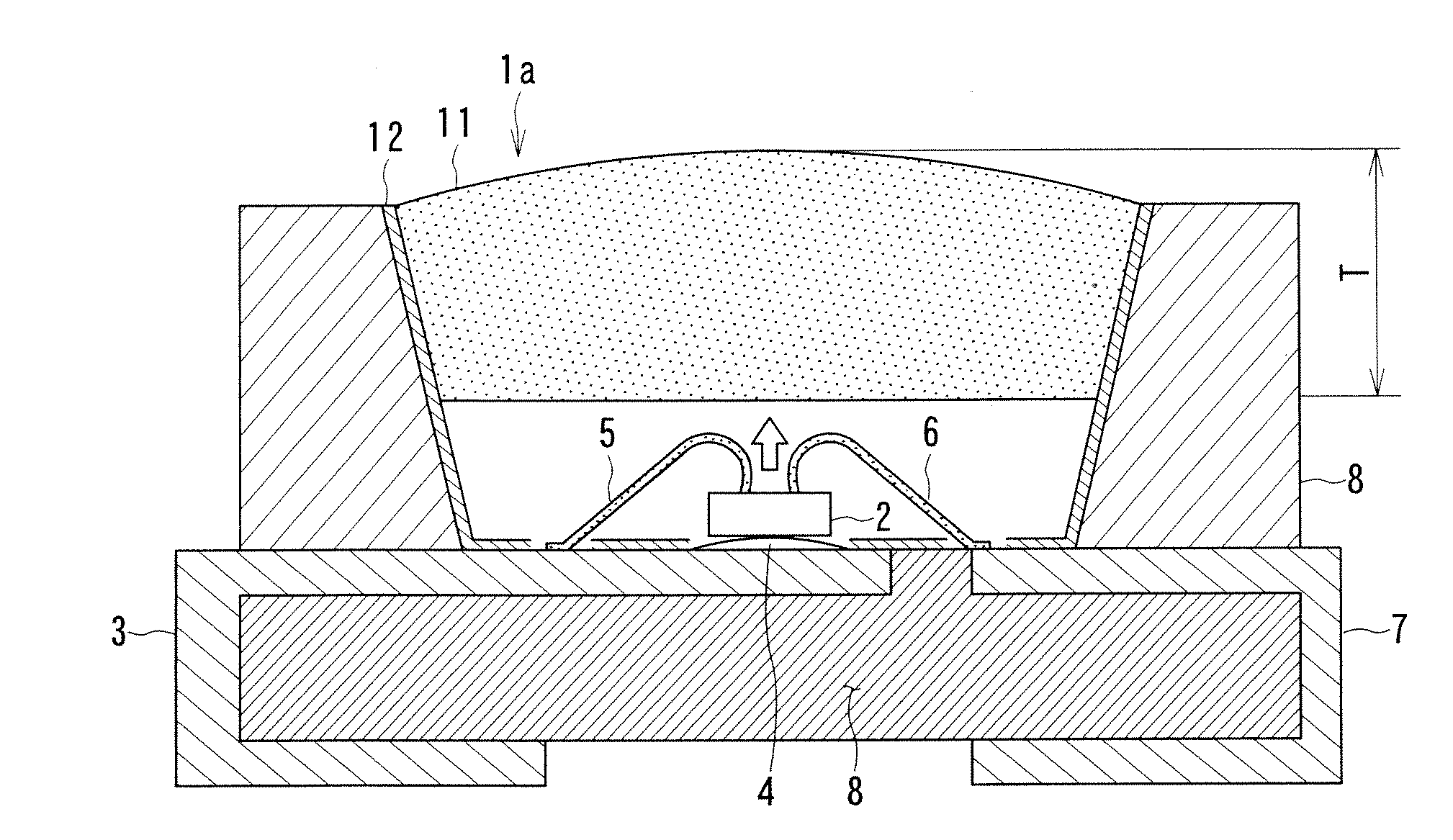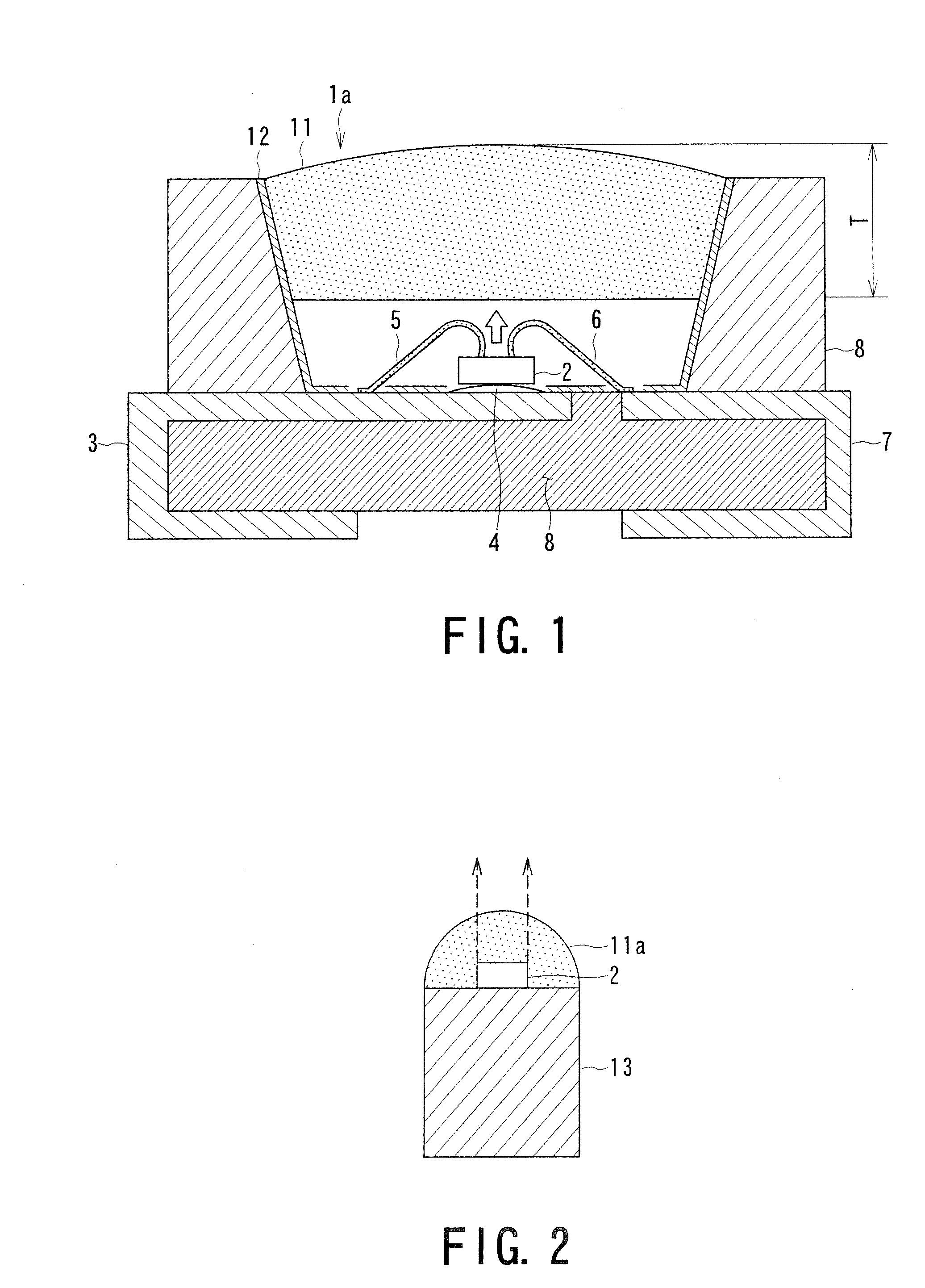Light emission device
- Summary
- Abstract
- Description
- Claims
- Application Information
AI Technical Summary
Benefits of technology
Problems solved by technology
Method used
Image
Examples
example 1
[0062]0.9 mol of strontium carbonate, 0.08 mol of barium carbonate, 0.02 mol of calcium carbonate, 0.001 mol of europium oxide and 0.5 mol of silica were weighted to prepare a phosphor material. Then, ammonium chloride was added to the phosphor material at an amount of 2 mass % with respect to the phosphor material and the phosphor material was sufficiently blended thereby to prepare a material mixture. Next, the material mixture was injected into a crucible made of alumina and the material mixture was calcined in air atmosphere under the temperature condition of 600° C. for one hour. After cooling the crucible, the calcined material was well mixed. Subsequently, the mixture was injected into the alumina crucible, and then sintered in a reductive atmosphere composed of 3%-hydrogen gas and nitrogen gas at a temperature condition of 1200° C. for two hours. Thus obtained sintered body was then pulverized, followed by wet-cleaning and drying. The dried material was passed through a siev...
examples 2-4
[0070]The same manufacturing process as in Example 1 was repeated except that only a thickness of the sintered body of the circular-plate-shaped ceramic phosphor 11 prepared in Example 1 was changed as shown in Table 1. Each of the ceramic phosphors 11 was attached to a central portion of a bottom surface of a packaging container, thereby to prepare respective light emitting apparatus of Examples 2-4 each having the same structure as in Example 1 shown in FIG. 1.
[0071]With respect to each of thus prepared light emitting apparatuses 1a, an emission output and an emission chromaticity were measured at a time when an electric power was inputted under the same conditions as in Example 1, thereby to obtain results shown in Table 1 hereunder.
TABLE 1Thickness ofEmissionCeramic PhosphorEmission OutputChromaticitySample No.(Sintered Body) (mm)(mCd / m2)(x, y)Example 20.66500.31, 0.30Example 30.86800.33, 0.34Example 41.07000.35, 0.36
[0072]As is clear from the results shown in Table 1, according...
example 5
[0075]The same manufacturing processes of material mixing, molding and sintering as in Example 1 were repeated under the same conditions in Example 1 except that the ratio of the europium oxide to be contained in the phosphor material was changed to 0.004 mol, thereby to prepare a circular-plate-shaped ceramic phosphor as a sintered body.
[0076]A density (relative density) of this sintered body with respect to a true specific gravity was 99.8%, while a transmission of a light having wavelength of 570 nm was 40% and a transmission of a light having wavelength of 395 nm was 2%. In addition, a surface roughness Ra of each of upper and lower surfaces of the circular-plate-shaped ceramic phosphor was 50 μm.
[0077]On the other hand, a flip chip type semiconductor light emitting diode having an emission peak wavelength of 395 nm and an outer size of 200 μm×200 μm was prepared, and there was prepared a packaging container having a diameter of 2 mm and a white-colored reflecting member 12 prov...
PUM
 Login to View More
Login to View More Abstract
Description
Claims
Application Information
 Login to View More
Login to View More - Generate Ideas
- Intellectual Property
- Life Sciences
- Materials
- Tech Scout
- Unparalleled Data Quality
- Higher Quality Content
- 60% Fewer Hallucinations
Browse by: Latest US Patents, China's latest patents, Technical Efficacy Thesaurus, Application Domain, Technology Topic, Popular Technical Reports.
© 2025 PatSnap. All rights reserved.Legal|Privacy policy|Modern Slavery Act Transparency Statement|Sitemap|About US| Contact US: help@patsnap.com



